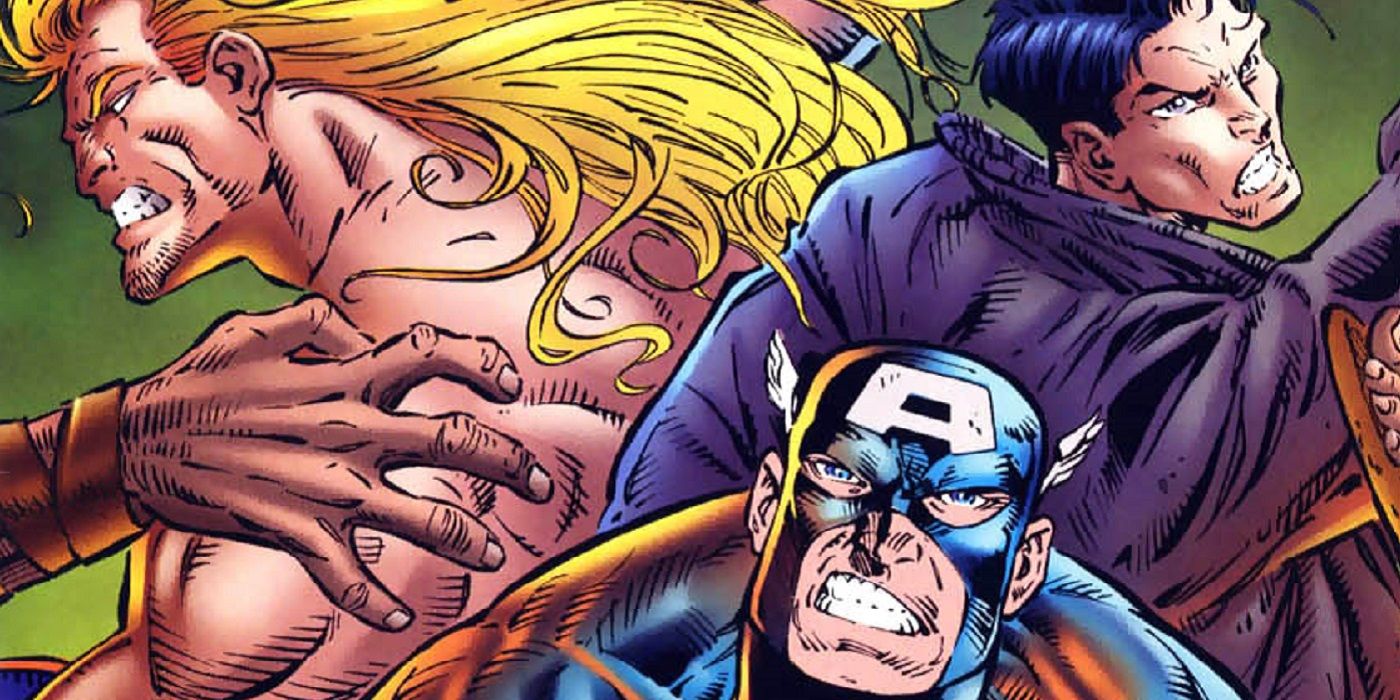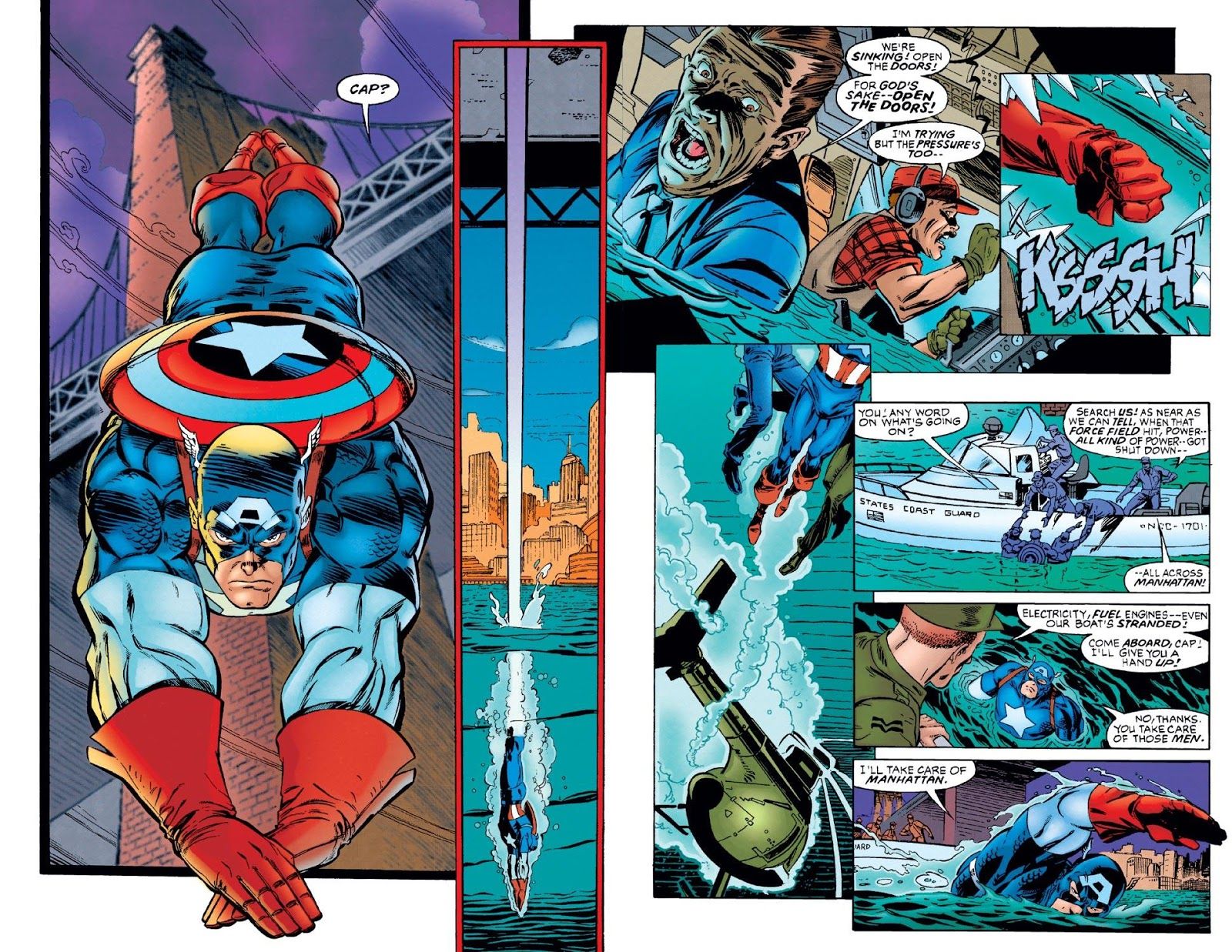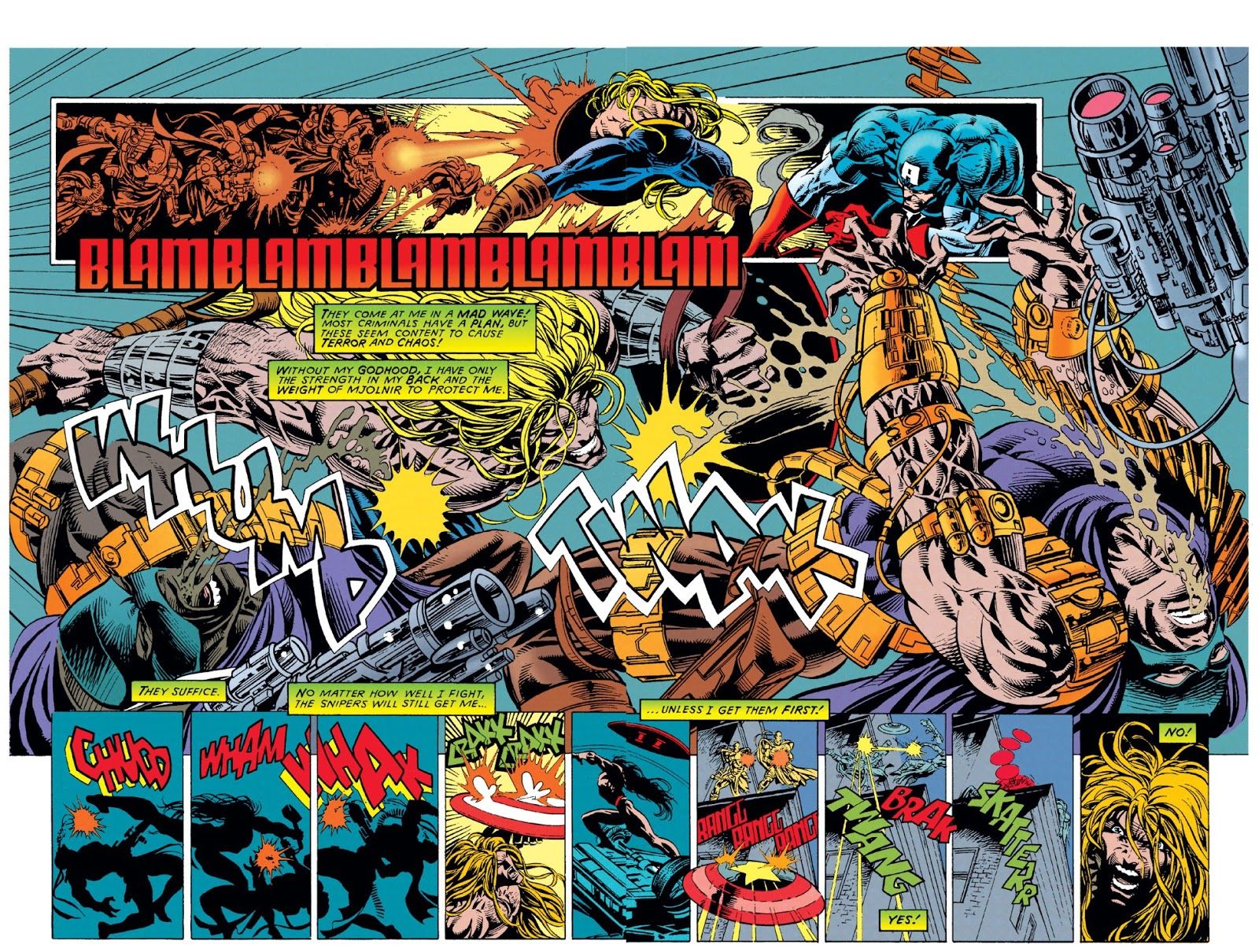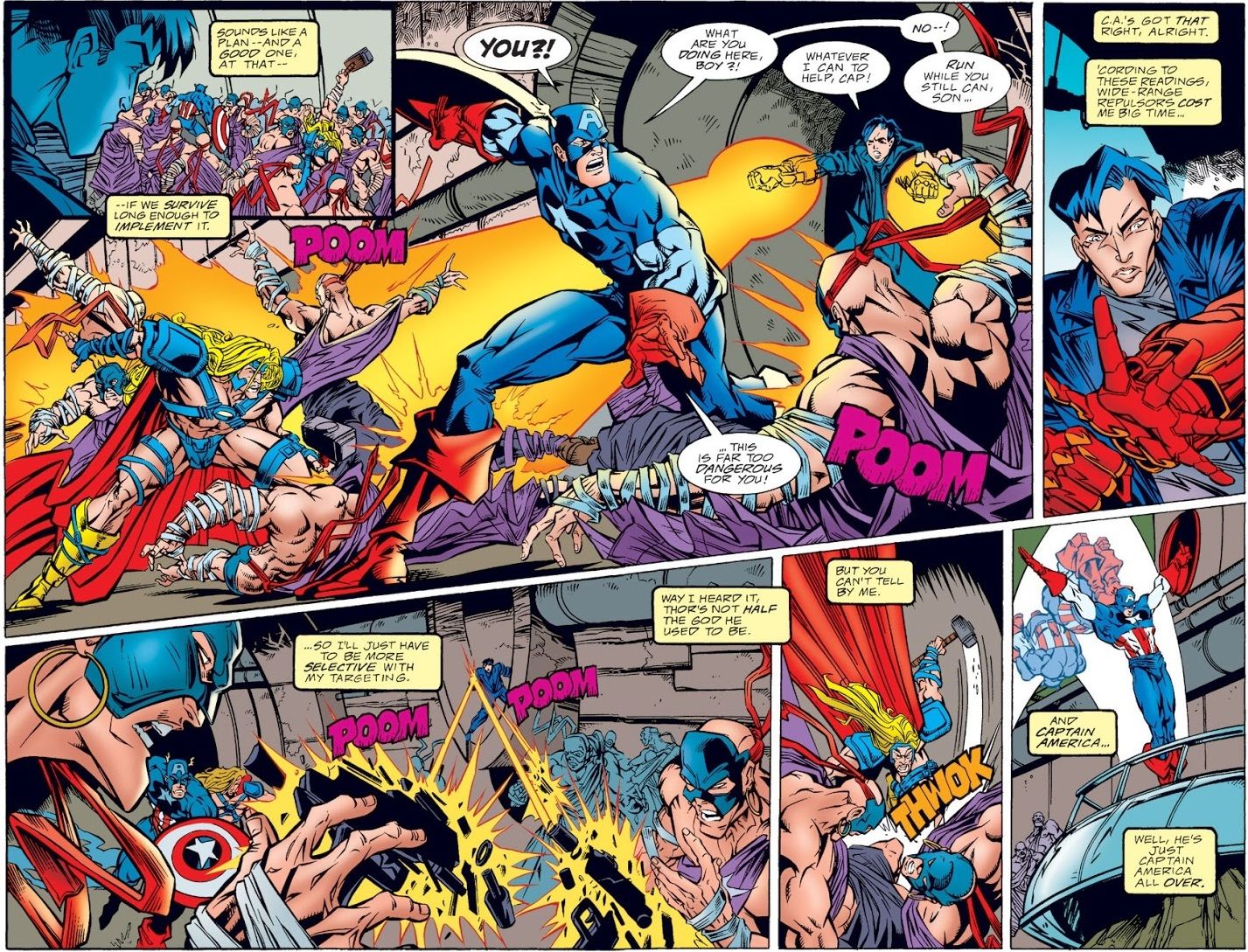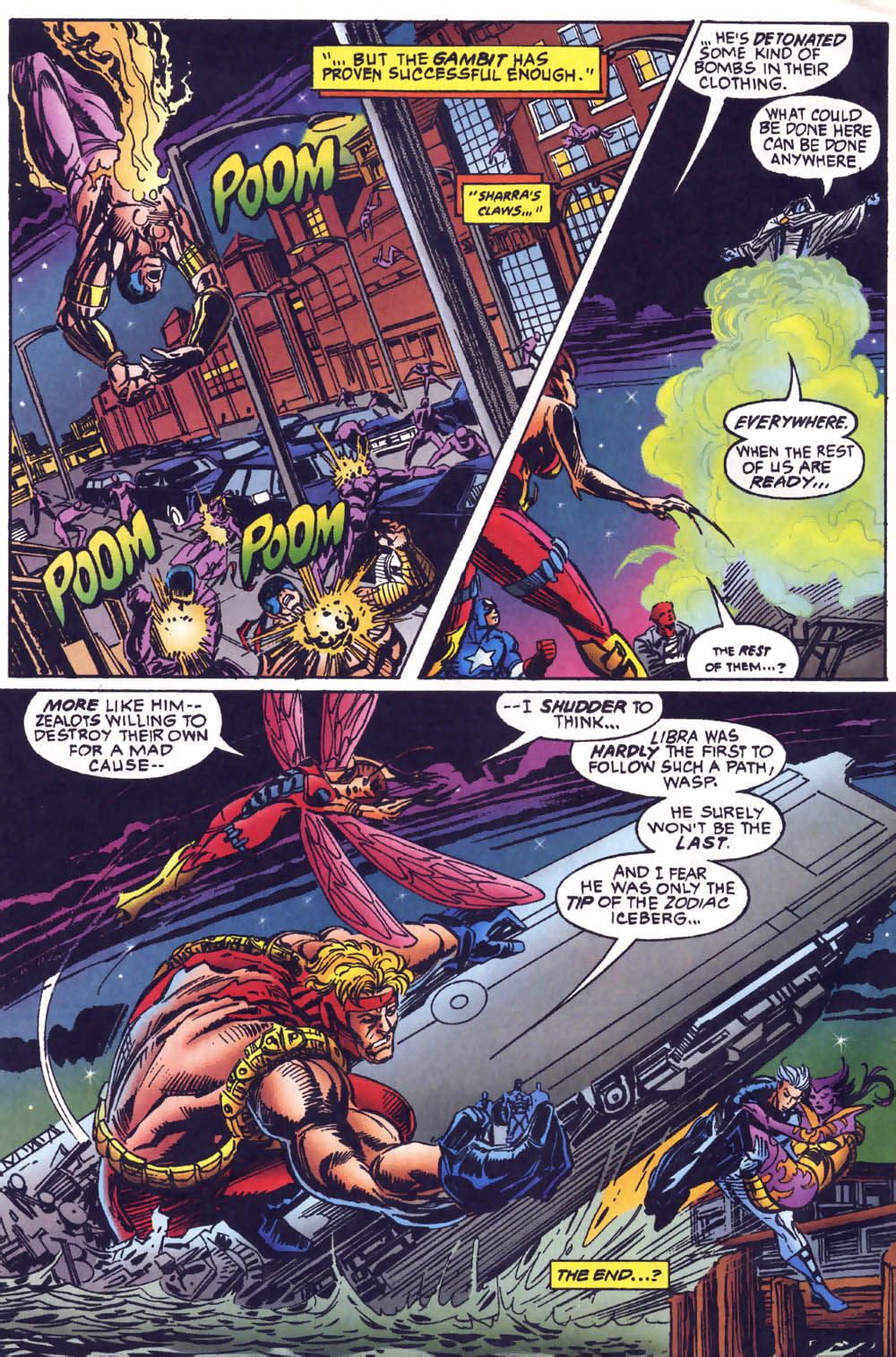This is "Look Back," a feature that I plan to do for at least all of 2020 and possibly beyond that (and possibly forget about in a week, who knows?). The concept is that every week (I'll probably be skipping the four fifth weeks in the year, but maybe not) of a month, I will spotlight a single issue of a comic book that came out in the past and talk about that issue (often in terms of a larger scale, like the series overall, etc.). Each week will be a look at a comic book from a different year that came out the same month X amount of years ago. The first week of the month looks at a book that came out this month ten years ago. The second week looks at a book that came out this month 25 years ago. The third week looks at a book that came out this month 50 years ago. The fourth week looks at a book that came out this month 75 years ago. The occasional fifth week looks at books from 20/30/40/60/70/80 years ago.
Today, we go back to January 1996 for the utterly bizarre Avengers crossover, "First Sign," which teamed up Captain America, Iron Man and Thor in a way that you've never seen them before (and for good reason).
As you may or may not know, I do a column called "Remember to Forget," about stories that I wish I could forget, but since I can't, I make you all suffer along with me. You know, not OFFENSIVE stories, just really big misfires. That's the thing, though, about "First Sign," it's really not even worth featuring for "Remember to Forget," as it is less awful as much as it is just such a negligible story period. The only thing that really stands out about it is the TIMING of the story. It happened to come out at perhaps the weirdest period in Iron Man's life, one of the weirder periods in Thor's life and just as Captain America had come back from the dead (again). So it's such an interesting example of "Wow, all of that was going on at the same time?"
This crossover takes place literally the month after The Crossing, one of the most controversial crossovers in Avengers history ended. Among the notable events in that crossover was that Iron Man was revealed to have been secretly turned evil years ago and had been working for Kang for many years and that Kang had tried to turn Hank Pym evil and failed, but in the process, had caused Hank Pym's mental problems and Iron Man nearly killed the Wasp before Hank saved her by mutating her into a human-sized wasp creature and finally, the Avengers went back in time and brought Tony Stark from his teen years (before he was corrupted) and had him fight his older self. Older Iron Man nearly killed his younger self (to the point where Teen Tony now has to wear a chestplate to keep his heart beating) but in the end, old Tony sacrificed himself to save the Avengers (and Earth) in battle with Kang. It was a total mess.
MEANWHILE, while The Crossing was going down, Warren Ellis and Mike Deodato completely revamped Thor, taking away his magical abilities (so he was just a really fit guy with a hammer). Deodato designed a new costume for Thor, but by this point, despite it appearing in all sorts of ads and covers, it did not actually show up in the comic yet (this is important for later in this story). Thor actually appeared in The Crossing briefly in the middle of all that, but he still had his powers then. Plus, Captain America was thought to be dead during most of The Crossing, but had actually been revived by his arch-rival, the Red Skull, as the Skull needed Cap's help in defeating Adolf Hitler, whose mind had taken control of a Cosmic Cube (Skull figuring that the one man who could defeat cosmic Hitler would be Captain America). Cap succeeded and defeated both Hitler AND the Skull. In the process, though, Cap discovered that his old girlfriend, Sharon Carter, was really alive (he thought he had seen her killed years earlier). She worked alongside him in taking Hitler and Skull down. Cap showed up right at the end of The Crossing (he was there when they went back in time and got Teen Tony).
Okay, so Captain America #449 (by Mark Waid, Ron Garney, Sandu Florea, Scott Koblish and Denis Rodier) is actually mostly a very nice story, as Cap and Sharon confront SHIELD about Sharon having gone deep undercover while "dead." But then a force field traps most of New York City and wipes out the power in the city. A helicopter goes down and Cap is on the move, in an outstanding Garney page...
The whole deal was caused by a new version of the Zodiac, and Cap decides that since he can't call the Avengers on his communicard, he heads to Thor's apartment to get him to use his powers to wipe out the group following him. He is shocked to find Thor is with the Enchantress and even more shocked to learn that Thor has no magic powers!
This leads to Thor #496 (by William Messner-Loebs and Mike Deodato), where Cap and Thor take on the Zodiac together and boy, Deodato really got to cut loose in the story, with some stunning action pages, like when Thor throws Captain America's shield (but isn't prepared for it to not return to him)...
At the end of the issue, they discover one of the Zodiac's power devices (that allows them to use THEIR weapons and to travel through the force field).
This leads to Iron Man #326 (by Terry Kavanagh and a trio of very young pencilers, Jimmy Cheung, Hector Collazo and Steve Ellis, with inks by Mark McKenna, Andy Lanning and Steve Moncuse (it's funny, I did a chat with Fred Van Lente and Ryan Dunlavey and they specifically referenced this period in Steve Ellis' career, as they all had gone to school together and he was starting to break in at Marvel and they were both really impressed). Remember how a lot of the art at the time had Thor in his Deodato-designed costume? Well, when teen Tony finds Cap and Thor, Thor is wearing his costume out of nowhere (classic miscommunication between titles)...
The three heroes, very different from their normal team-ups, steal a transporter and go to meet the other Avengers who are trapped outside the force field.
In Avengers #396 (by Terry Kavanagh, John Statema and Tom Palmer), Tony almost dies letting the other Avnegers in and they take on the Zodiac and their leader, Libra. Giant-Man then smashes the main machine that the Zodiac was using and that was it...
It really just fizzled out and that was it. What a weird, weird crossover.
If you folks have any suggestions for February (or any other later months) 2011, 1996, 1971 and 1946 comic books for me to spotlight, drop me a line at brianc@cbr.com! Here is the guide, though, for the cover dates of books so that you can make suggestions for books that actually came out in the correct month. Generally speaking, the traditional amount of time between the cover date and the release date of a comic book throughout most of comic history has been two months (it was three months at times, but not during the times we're discussing here). So the comic books will have a cover date that is two months ahead of the actual release date (so October for a book that came out in August). Obviously, it is easier to tell when a book from 10 years ago was released, since there was internet coverage of books back then.

